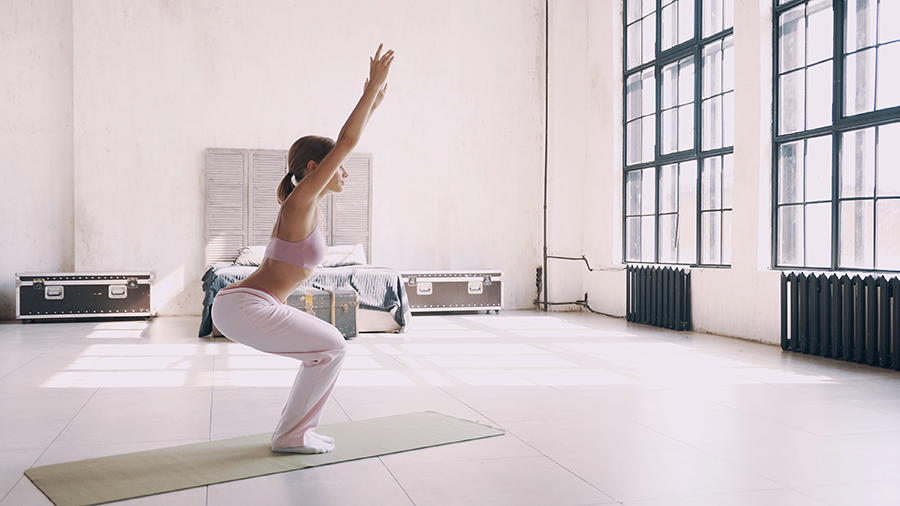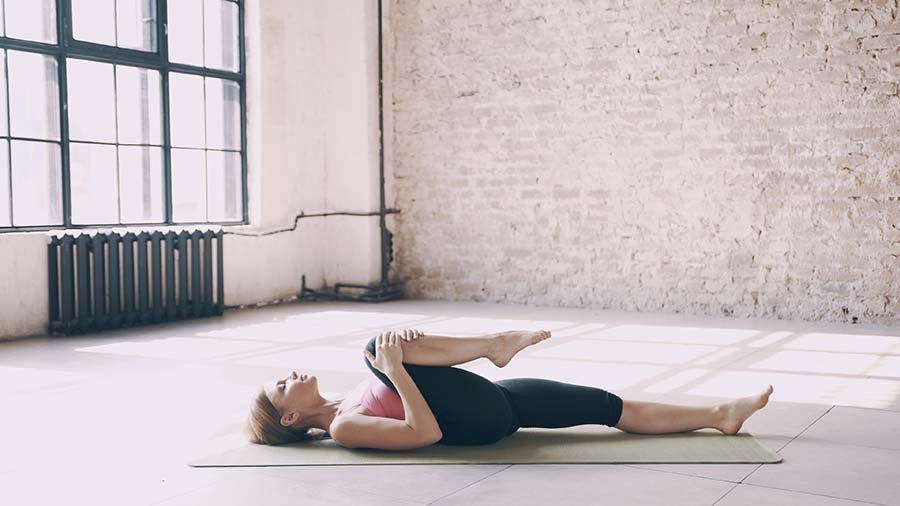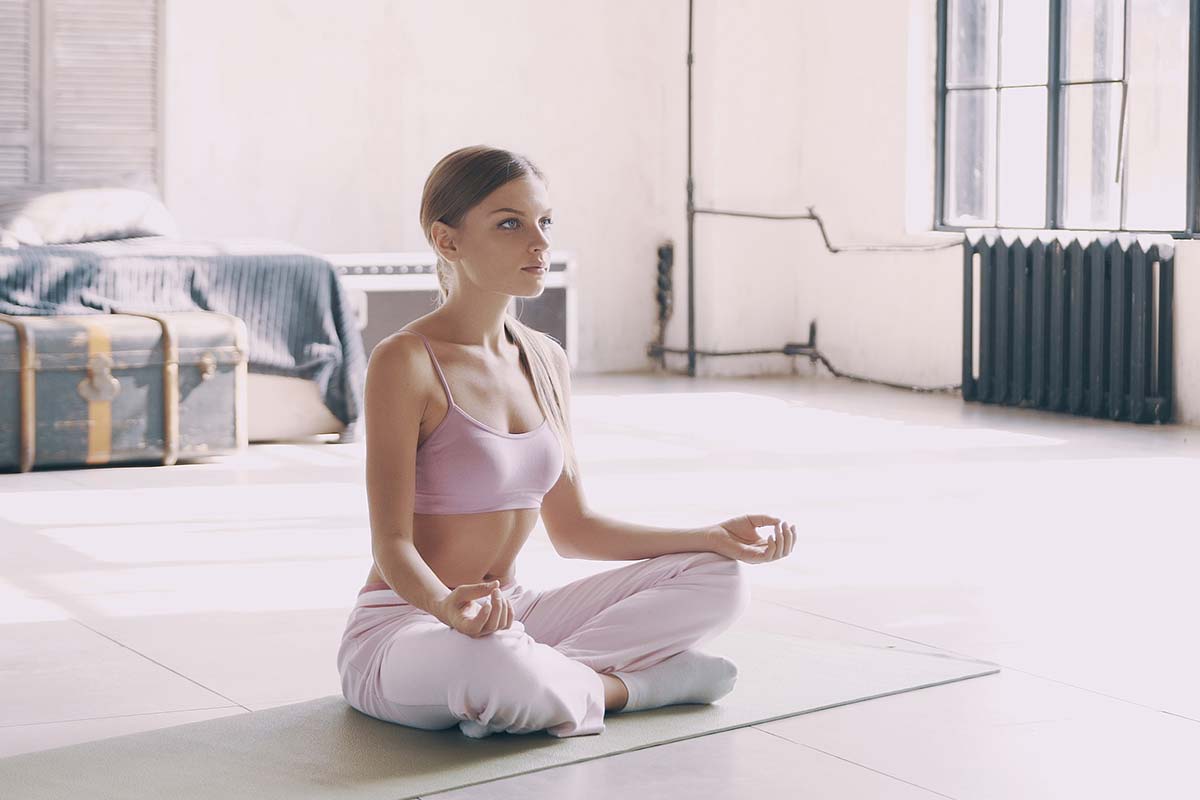Yoga has evolved from ancient spiritual practice to a mainstream wellness phenomenon that millions embrace for physical fitness, mental clarity, and emotional balance. While traditional yoga is often practiced barefoot, the modern yoga landscape includes diverse styles and environments where proper footwear can enhance your practice and protect your feet. At StepForge, we understand that every aspect of your athletic journey matters – including those moments when you’re flowing through sun salutations or holding challenging poses.

The Ancient Roots of a Modern Movement
Yoga originated over 5,000 years ago in ancient India as a comprehensive system for achieving physical, mental, and spiritual harmony. The Sanskrit word “yoga” means “to unite” or “to join,” reflecting the practice’s goal of connecting mind, body, and spirit. What began as a spiritual discipline has transformed into one of the world’s most popular forms of exercise and stress relief.
Today’s yoga practitioners range from complete beginners seeking stress relief to advanced athletes using yoga for cross-training and injury prevention. This diversity has created a rich ecosystem of yoga styles, each with unique requirements and considerations for footwear and gear.
Popular yoga styles and their characteristics:
Hatha Yoga: Gentle, slow-paced practice focusing on basic postures and breathing. Perfect for beginners and those seeking relaxation.
Vinyasa Yoga: Dynamic, flow-based practice that links breath with movement. Requires stability and flexibility during transitions.
Bikram/Hot Yoga: Practiced in heated rooms (95-105°F), this style demands excellent grip and moisture management.
Ashtanga Yoga: Athletic, fast-paced practice with set sequences. Requires maximum stability and foot support during challenging poses.
Yin Yoga: Meditative practice with long-held poses. Comfort and support during extended holds are essential.

The Barefoot Tradition vs. Modern Practicality
Traditional yoga emphasizes the connection between feet and earth, encouraging barefoot practice to enhance balance, proprioception, and grounding. This approach offers genuine benefits: direct contact with the floor improves stability, allows for better toe grip during balancing poses, and maintains the authentic feel of ancient practice.
However, modern yoga environments present practical challenges that our ancestors didn’t face. Studio floors may be shared by hundreds of practitioners daily, outdoor surfaces can be rough or contaminated, and some individuals have foot conditions that make barefoot practice uncomfortable or inadvisable.
When footwear becomes beneficial:
Hygiene Concerns: Public studios, especially those offering hot yoga classes, can harbor bacteria and fungi. Proper footwear provides a protective barrier.
Outdoor Practice: Beach yoga, park sessions, or rooftop classes expose feet to sand, rocks, hot surfaces, or rough terrain.
Medical Considerations: Plantar fasciitis, diabetes, or other foot conditions may require supportive footwear during practice.
Temperature Extremes: Cold floors in winter or scorching surfaces in summer can distract from mindful practice.
Transitional Activities: Many practitioners combine yoga with walking, hiking, or other activities that require protective footwear.
The Science of Yoga and Physical Wellness
Modern research has validated what yogis have known for millennia: regular yoga practice provides profound physical and mental health benefits. Understanding these benefits helps us appreciate why proper preparation – including appropriate footwear when needed – supports rather than detracts from authentic practice.
Physical benefits backed by scientific research:
Improved Flexibility and Range of Motion: Regular yoga practice significantly increases joint mobility and muscle flexibility. Studies show improvements in hamstring flexibility, spinal mobility, and overall functional movement patterns.
Enhanced Strength and Stability: Yoga builds functional strength, particularly in the core, shoulders, and stabilizing muscles. Many poses require sustained muscle engagement that develops both strength and endurance.
Better Balance and Proprioception: The challenging balance poses in yoga improve spatial awareness and reduce fall risk, benefits that extend well beyond the yoga mat.
Cardiovascular Health: Dynamic yoga styles provide cardiovascular benefits similar to moderate aerobic exercise, while also reducing blood pressure and improving heart rate variability.
Pain Relief and Injury Prevention: Yoga practice can alleviate chronic pain conditions, particularly lower back pain, and helps prevent injuries by improving flexibility and body awareness.
Mental and emotional benefits:
Stress Reduction: Yoga practice significantly reduces cortisol levels and activates the parasympathetic nervous system, promoting relaxation and stress relief.
Improved Mental Clarity: The mindfulness aspects of yoga enhance focus, concentration, and cognitive function.
Better Sleep Quality: Regular yoga practice improves sleep onset, duration, and quality, contributing to overall wellness.
Emotional Regulation: Yoga provides tools for managing anxiety, depression, and emotional volatility through breath work and mindful movement.
Choosing the Right Footwear for Your Yoga Journey
While barefoot practice remains ideal for many yoga styles, certain situations call for thoughtful footwear choices. The key is selecting options that provide necessary protection while maintaining the connection and stability that yoga requires.
Essential features for yoga footwear:
Minimal Design: Shoes should provide protection without excessive bulk or heel elevation that interferes with balance and ground connection.
Flexible Sole: The sole must allow natural foot movement and toe articulation essential for many yoga poses.
Breathable Materials: Yoga generates heat and perspiration; footwear must manage moisture effectively.
Secure Fit: Shoes should stay in place during dynamic movements without being restrictively tight.
Non-Slip Properties: Excellent grip prevents sliding during poses, especially important in heated environments.
Easy On/Off: Quick removal allows for barefoot practice when appropriate.
Types of yoga-appropriate footwear:
Yoga Socks with Grips: Provide hygiene protection and grip while maintaining barefoot feel. Ideal for studio practice where minimal coverage is preferred.
Minimalist Training Shoes: Offer protection and support while preserving natural foot function. Perfect for outdoor practice or transitioning between activities.
Water Shoes: Excellent for beach yoga or wet environments, providing protection with minimal weight and maximum drainage.
Flexible Athletic Sandals: Allow air circulation while providing sole protection, suitable for casual outdoor practice.
Building Your Complete Yoga Practice
Footwear is just one element of a comprehensive yoga practice. Creating a sustainable, enjoyable yoga journey requires attention to various factors that support both physical practice and mental wellness.
Essential elements for successful yoga practice:
Consistent Schedule: Regular practice, even 15-20 minutes daily, provides more benefits than occasional long sessions. Consistency builds both physical capability and mental discipline.
Appropriate Environment: Whether practicing at home, in a studio, or outdoors, your environment should feel safe, comfortable, and conducive to mindfulness.
Quality Equipment: A good yoga mat, supportive props when needed, and appropriate clothing contribute to safe, comfortable practice.
Proper Preparation: Light eating, adequate hydration, and mental preparation help optimize each practice session.
Progressive Approach: Building practice gradually prevents injury and maintains motivation. Advanced poses develop naturally through consistent foundational work.
Mindful Attention: Yoga is as much about mental focus as physical postures. Breath awareness and present-moment attention distinguish yoga from mere exercise.
Yoga as Cross-Training for Athletes
Many serious athletes have discovered yoga’s power as complementary training. The practice addresses common athletic issues like muscle imbalances, limited flexibility, and mental pressure while enhancing performance in other sports.
Benefits for different types of athletes:
Runners: Yoga improves hip flexibility, strengthens stabilizing muscles, and provides mental training for endurance challenges. Many runners find yoga invaluable for injury prevention and recovery.
Strength Athletes: Yoga enhances mobility and flexibility often limited by heavy lifting, while providing active recovery and stress relief.
Team Sport Athletes: The balance, agility, and body awareness developed through yoga translate directly to improved athletic performance.
Endurance Athletes: Yoga’s emphasis on breath control and mental focus provides valuable tools for managing fatigue and maintaining concentration during long efforts.
Creating Your Personal Yoga Journey
The beauty of yoga lies in its adaptability to individual needs, goals, and circumstances. Whether you’re seeking physical fitness, stress relief, spiritual growth, or athletic enhancement, yoga offers tools that can be customized to support your unique journey.
Getting started with yoga:
Begin with Basics: Start with beginner-friendly classes or online tutorials that emphasize proper alignment and breathing techniques.
Listen to Your Body: Yoga should challenge you while respecting your current limitations. Pain is never the goal.
Explore Different Styles: Try various yoga approaches to find what resonates with your preferences and goals.
Invest in Quality: Good equipment and appropriate footwear when needed support safe, comfortable practice.
Find Community: Whether online or in-person, connecting with other practitioners provides motivation and support.
Be Patient: Yoga benefits develop gradually through consistent practice rather than forced achievement.
The StepForge Approach to Mind-Body Wellness
At StepForge, we recognize that true athletic excellence encompasses more than just high-intensity training. The mindfulness, flexibility, and body awareness developed through yoga complement and enhance performance in all athletic endeavors. That’s why our footwear selection includes options that support diverse movement practices, from dynamic HIIT workouts to meditative yoga flows.
Our commitment to athletic wellness extends beyond providing excellent footwear. We understand that modern athletes seek balance – the explosive power needed for competition and the restorative practices that sustain long-term health and performance. Yoga represents this balance perfectly, offering both physical challenge and mental restoration.
Whether you’re a dedicated yogi seeking versatile footwear for varied practice environments, or an athlete exploring yoga as cross-training, we provide options that honor both performance and mindfulness principles.
Moving Forward: Integrating Yoga into Modern Life
The ancient practice of yoga continues to evolve, adapting to contemporary needs while maintaining its essential wisdom. As our understanding of mind-body wellness grows, yoga’s role in comprehensive fitness and mental health becomes increasingly clear.
The key to successful yoga practice lies not in perfect poses or expensive gear, but in consistent, mindful engagement with your body and breath. Whether practiced barefoot on a traditional mat or with protective footwear on challenging terrain, yoga offers a pathway to greater strength, flexibility, and inner peace.
Your yoga journey is unique, and your preparation should reflect that individuality. From the studio to the great outdoors, from gentle restoration to athletic challenge, the right foundation supports every step of your practice.
